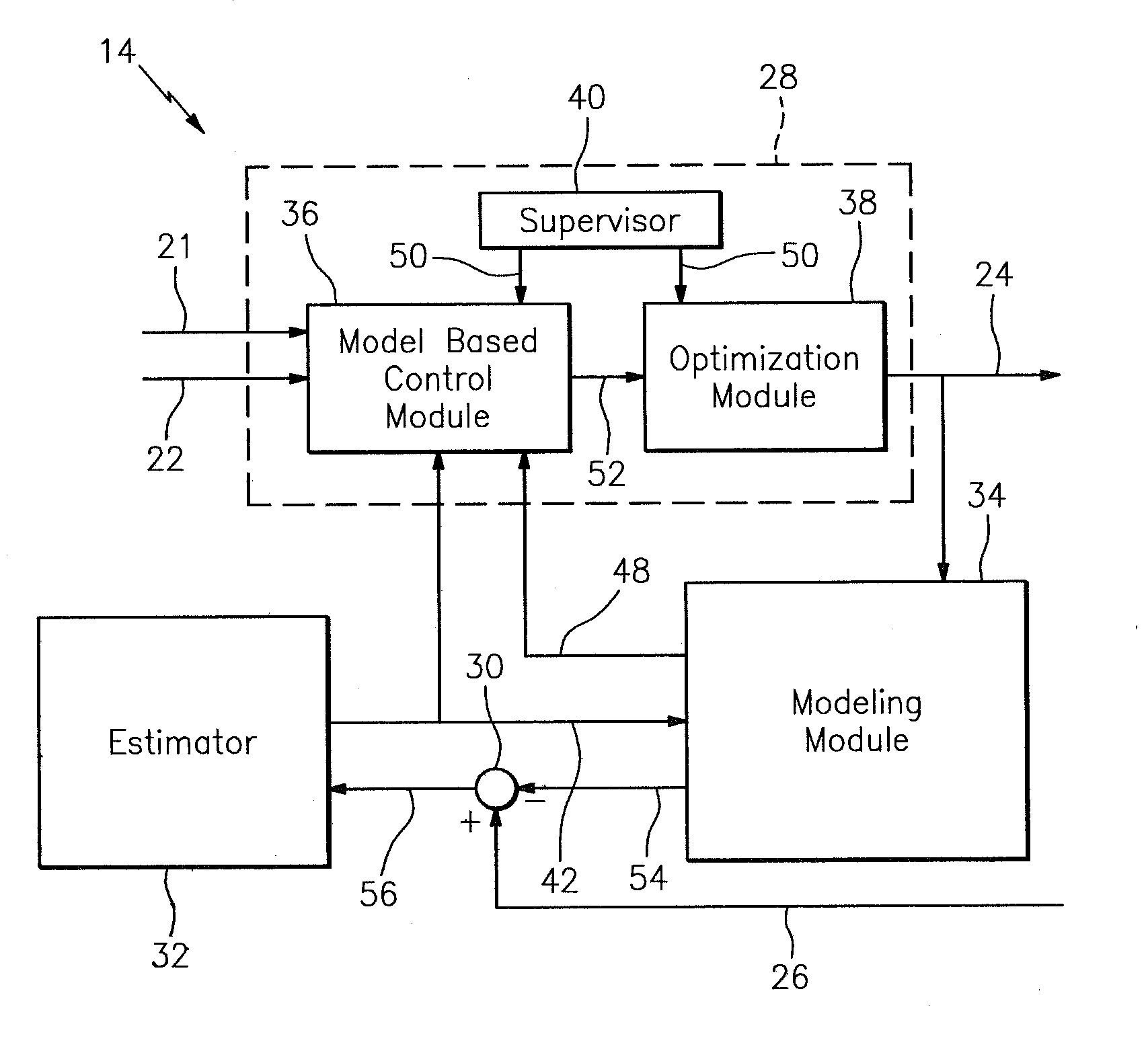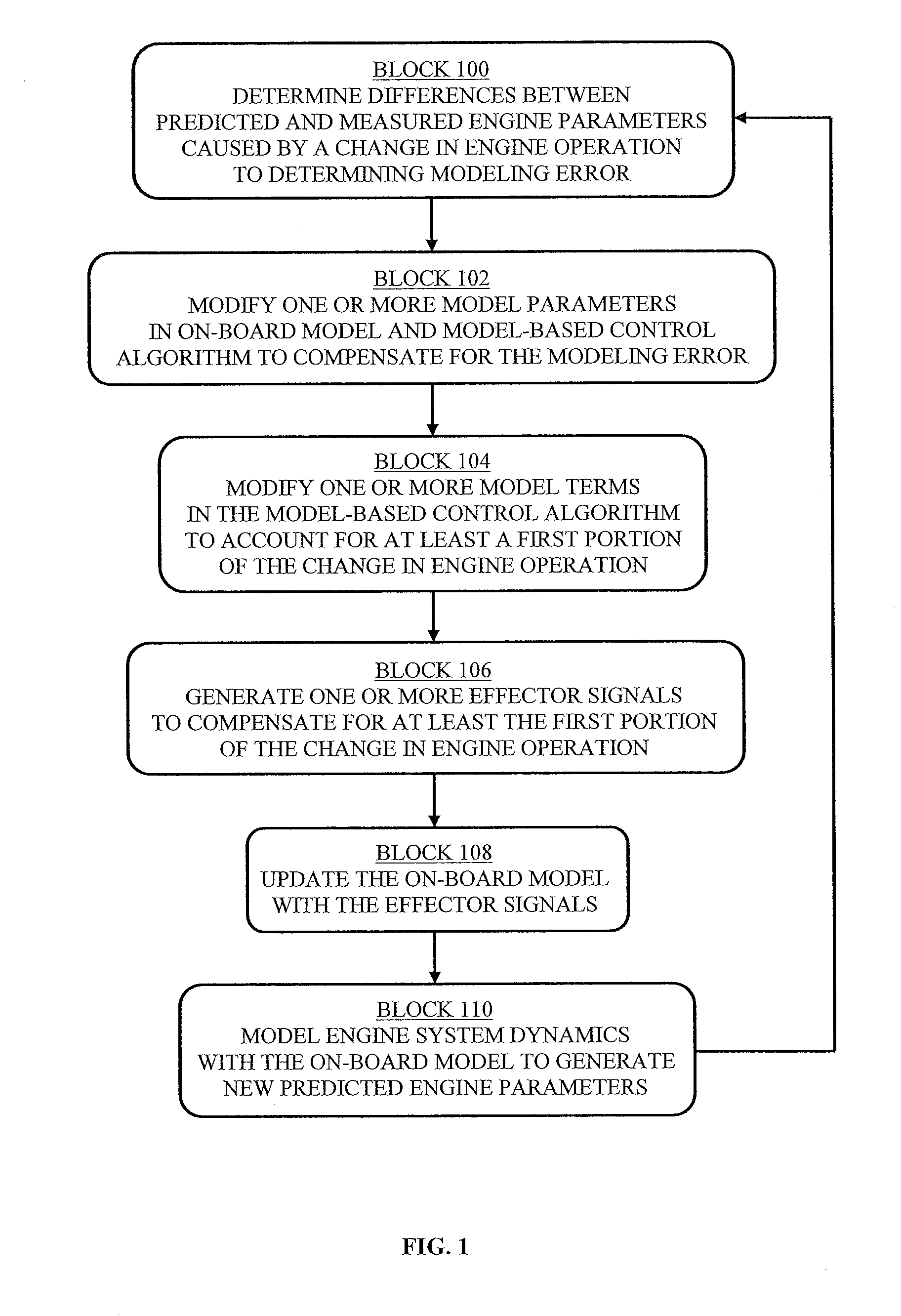Adaptive control for a gas turbine engine
a gas turbine engine and adaptive control technology, applied in adaptive control, process and machine control, instruments, etc., can solve the problems of increasing the rate of false positives, more faults remain undetected, and the selection of such a threshold can be difficult, so as to achieve better adaptability
- Summary
- Abstract
- Description
- Claims
- Application Information
AI Technical Summary
Benefits of technology
Problems solved by technology
Method used
Image
Examples
Embodiment Construction
[0015]The present invention includes a method and apparatus for adaptively controlling a gas turbine engine during both nominal and off-nominal operation. Nominal operation includes, for example, engine operation in an environment that occurs on a relatively routine basis (e.g., clear skies, moderate turbulence, rain, etc.), fully-functional engine operation, or slightly degraded engine operation that occurs on a relatively routine basis (e.g., moderate blade abalation, blade tip / case clearances opening, moderate icing, etc.). Off-nominal (or “subnominal”) operation includes, for example, engine operation in a substantially abnormal environment (e.g., an ash cloud, heavy turbulence, sand ingestion, heavy icing, foreign object damage (e.g., from ice, birds, runway debris, etc.), severe meteorological conditions, etc.), or substantially degraded engine operation (e.g., when an internal component / system of the engine 16 has sustained damage such as holes in a combustor or engine case, ...
PUM
 Login to View More
Login to View More Abstract
Description
Claims
Application Information
 Login to View More
Login to View More - R&D
- Intellectual Property
- Life Sciences
- Materials
- Tech Scout
- Unparalleled Data Quality
- Higher Quality Content
- 60% Fewer Hallucinations
Browse by: Latest US Patents, China's latest patents, Technical Efficacy Thesaurus, Application Domain, Technology Topic, Popular Technical Reports.
© 2025 PatSnap. All rights reserved.Legal|Privacy policy|Modern Slavery Act Transparency Statement|Sitemap|About US| Contact US: help@patsnap.com



